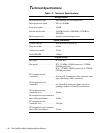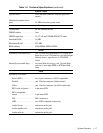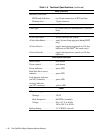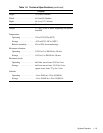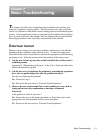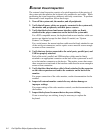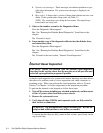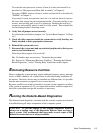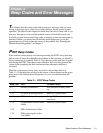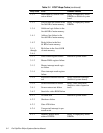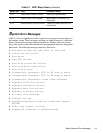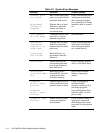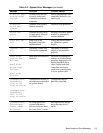
2-4 Dell OptiPlex GX
pro
Systems Service Manual
•
System error messages: These messages can indicate problems or pro-
vide status information. If a system error message is displayed, see
Table 3-2.
•
Beep codes: A beep code is a series of beeps that indicates an error con-
dition. If the system emits a beep code, see Table 3-1.
NOTE: The system beeps once during the boot routine. This single beep is
normal and is not a beep code.
5. Observe the monitor screen for the Diagnostics Menu.
Does the Diagnostics Menu appear?
Yes .
See “Running the Diskette-Based Diagnostics” found later in this
chapter.
No.
Proceed to step 6.
6. Insert another copy of the diagnostics diskette into the diskette drive,
and reboot the system.
Does the Diagnostics Menu appear?
Yes .
See “Running the Diskette-Based Diagnostics” found later in this
chapter.
No.
Proceed to the next section, “Internal Visual Inspection.”
I
nternal Visual Inspection
A simple visual inspection of a system unit’s interior hardware can often lead to
the source of a problem, such as a loose expansion card, cable connector, or
mounting screw. When you perform the visual inspection, refer to “System
Features” in Chapter 1 to locate components in the inspection procedure.
To perform the internal visual inspection, follow these steps:
1. Turn off the system, including any attached peripherals, and disconnect
all the AC power cables from their power sources.
2. Remove the system unit cover.
3. Verify that all chips, DIMMs, and expansion cards, are fully seated in
their sockets or connectors.
To ensure that the chips are fully seated in their sockets, press firmly on the
top of each chip.
CAUTION: Before you proceed with the internal visual inspection
described in this section, ensure that the user has saved all open files and
exited all open application programs if possible.
WARNING: The microprocessor can get extremely hot. Be sure the
chip has had sufficient time to cool before you touch it.



